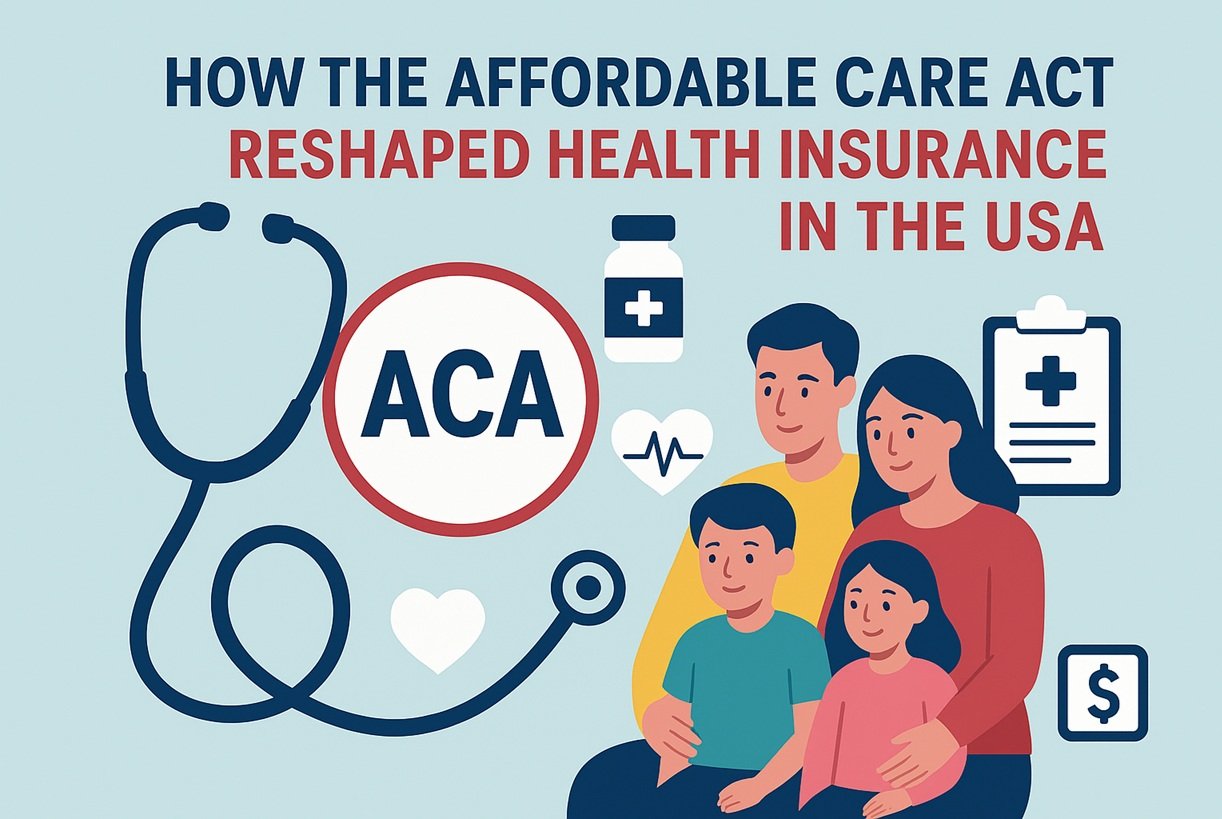Originally posted on September 19, 2025 @ 9:58 AM
Health Insurance in the USA: The healthcare system in the United States has always been complex, costly, and sometimes difficult to navigate. Before 2010, millions of Americans struggled with limited access to affordable health coverage, especially those with pre-existing conditions. That changed with the introduction of the Affordable Care Act (ACA), often referred to as Obamacare, which reshaped how people access and use health insurance in the USA. This article breaks down the major ways the ACA transformed the system, what it means for families, workers, and businesses, and how it continues to influence health coverage today.
Understanding the Affordable Care Act
The Affordable Care Act was signed into law in March 2010 by President Barack Obama. Its main goal was simple yet ambitious: to make health insurance in the USA more affordable, accessible, and fair for all citizens.
The law included several provisions that tackled long-standing problems in the healthcare system. Some of its core objectives were:
Expanding health coverage to uninsured Americans.
Preventing discrimination based on pre-existing conditions.
Offering financial help through subsidies to lower-income families.
Expanding Medicaid to cover more people.
Creating health insurance marketplaces for transparent comparison and enrollment.
In short, the ACA changed the landscape of healthcare by aiming to put patients first rather than insurance companies.
Key Ways the ACA Changed Health Insurance in the USA
1. Expanded Access to Coverage
Before the ACA, millions of Americans had no health insurance at all. The law created state and federal marketplaces where people could shop for coverage. It also expanded Medicaid in many states, giving millions of low-income adults access to healthcare for the first time.
2. Protections for Pre-Existing Conditions
One of the most celebrated reforms was banning insurance companies from denying coverage or charging higher premiums based on pre-existing conditions. Whether someone had asthma, diabetes, or cancer, they could no longer be left uninsured.
3. Subsidies and Financial Assistance
The ACA introduced income-based subsidies to help families afford monthly premiums. This financial support made health coverage more realistic for middle- and lower-income households. Without it, many would still be priced out of the system.
4. Essential Health Benefits
Insurance companies are now required to cover certain essential services. These include preventive care, maternity and newborn care, prescription drugs, mental health services, and emergency care. This guaranteed a baseline of quality for health insurance in the USA.
5. Coverage for Young Adults
The ACA allowed young adults to stay on their parents’ insurance plans until age 26. This simple change helped millions of younger Americans maintain affordable healthcare during school or early careers.
6. Medicaid Expansion
The ACA gave states the option to expand Medicaid eligibility. While not every state chose to do so, the expansion provided millions of additional Americans with access to health coverage who otherwise might have gone uninsured.
Impact of the ACA on Different Groups
Families and Individuals
Families gained more security knowing they could not be denied coverage for health issues. Preventive care like checkups and vaccines became free under most insurance plans, lowering long-term healthcare costs.
Small Businesses
The ACA introduced tax credits to help small businesses provide health coverage to employees. However, some employers also faced new requirements to offer affordable coverage if they had a certain number of workers.
Healthcare Providers
Doctors and hospitals saw more insured patients, which reduced the number of unpaid medical bills. However, they also faced stricter reporting and quality-of-care requirements.
Insurance Companies
While insurers had to adapt to new rules, they also gained millions of new customers through the marketplaces and Medicaid expansion.
Challenges and Criticisms
While the Affordable Care Act brought many positive changes, it has not been without criticism. Some people experienced rising premiums, especially those who did not qualify for subsidies. Others worried about government involvement in healthcare. Political debates around “Obamacare” remain strong even today.
Still, the fact remains: the ACA fundamentally reshaped health insurance in the USA in ways that continue to affect millions of lives.
The Future of Health Insurance in the USA
Healthcare reform continues to evolve. Future changes may include expanding subsidies, adding a public option, or strengthening Medicaid. Regardless of political shifts, the ACA laid the foundation for more affordable and inclusive coverage.
As medical costs rise and more Americans seek fair treatment, the need for strong healthcare laws remains clear. The Affordable Care Act may not have solved every problem, but it permanently changed the conversation about health insurance in the USA.
Conclusion
The Affordable Care Act was a turning point in U.S. healthcare history. By expanding access, protecting patients, and setting new standards, it reshaped how Americans view and use health coverage. Whether you love it or criticize it, there’s no denying its influence on health insurance in the USA.
For families, businesses, and individuals, the ACA has brought both relief and challenges — but above all, it made healthcare a right for more people than ever before.
FAQs About Health Insurance in the USA and the ACA
Q1: What is the Affordable Care Act?
The Affordable Care Act (ACA), or Obamacare, is a 2010 law designed to make health coverage more affordable, fair, and accessible in the U.S.
Q2: How did the ACA improve health insurance in the USA?
It expanded coverage, banned denial for pre-existing conditions, offered subsidies, and required essential benefits in every plan.
Q3: Can young adults stay on their parents’ insurance under the ACA?
Yes, the ACA allows dependents to remain on their parents’ health insurance until age 26.
Q4: Did all states expand Medicaid under the ACA?
No. While many states expanded Medicaid, some chose not to, leaving gaps in coverage for low-income residents.
Q5: What is the future of health insurance in the USA after the ACA?
Future reforms may focus on expanding subsidies, adding public options, and further lowering healthcare costs, but the ACA’s framework remains essential.


